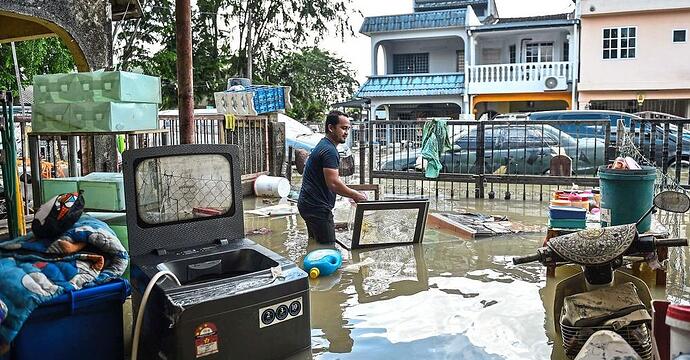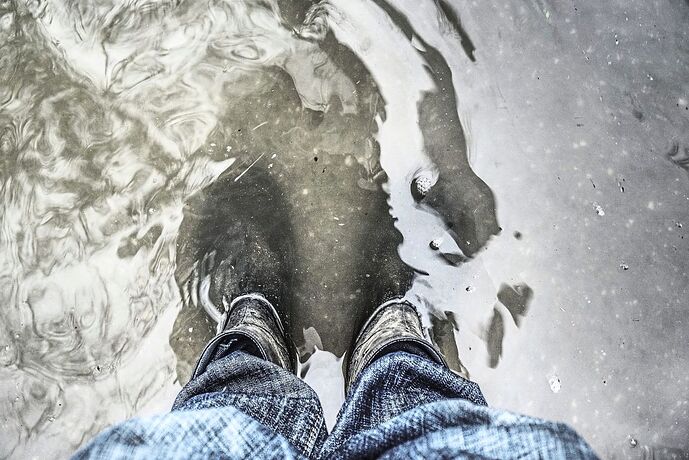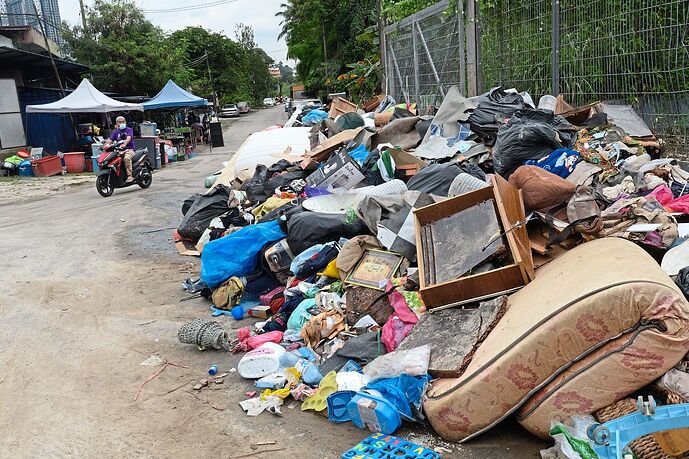The recent massive flooding in the country, especially in Selangor, caught many people off-guard and with that, almost no time to safeguard their home and possessions.
As of Dec 22, there are over 72,000 displaced flood victims across the country, with the worst hit being Pahang and Selangor.
Thousands of homes have been fully or partially inundated by floodwaters, and as the water slowly recedes in some areas, the arduous process of cleaning up begins.
Here are 10 things you need to remember to ensure your own safety as well as reduce further damages to your home, as advised by the United States’ Centres for Disease Control and Prevention (CDC) and other safety organisations.
-
Wear rubber boots and rubber gloves (to avoid electrical shocks) as well as protective eyewear (if possible) during the house-check and cleaning-up process.
-
NEVER turn the power on or off yourself, nor use an electric tool or appliance, while standing in water. If you have residual floodwater in your home but can turn off the main power from a dry location, you may do so. It’s best to have an electrician come and check your house’s electrical system before turning the power on again. All electrical equipment and appliances must be completely dry before reusing them. If unsure, get them checked by a certified electrician.
-
If you detect the smell of gas or suspect there is a leak, turn off the main gas valve or gas tanks. Then, open all the windows and leave your house immediately. If you have piped-in gas, alert a contractor or the building manager. Do not turn on the lights or do anything else that can incur a spark.
-
If your house has been empty and closed up for a few days, enter briefly to open all the doors and windows to ventilate the space for at least 30 minutes before you re-enter. You can use fans and dehumidifiers to remove moisture and speed up the drying process. Place fans at windows or doors to direct the air outwards rather than inwards to prevent the spread of mould. If you are using a generator, place it at least 6m (20ft) from any doors, windows or vents to prevent carbon monoxide poisoning.
-
Throw away food or bottled water that may have come into contact with floodwaters. During a flood, sewage may seep into the waters so use only clean bottled water, boiled or treated water for drinking and cooking.
-
Remove and throw out drywall (gypsum board), plaster and wall coverings (panelling or wallpaper) that have been contaminated with floodwater.
-
Throw out items that cannot be washed and cleaned with a bleach solution. These include mattresses, pillows, carpets and stuffed toys.
-
Clean walls, hard surface floors and other household surfaces with soap and water and disinfect with a solution containing one cup (250ml) of bleach and 19l of water.
-
Mould can develop within 24 to 48 hours of exposure to water, so remove wet contents like carpets and bedding as soon as possible. Certain items which have been wet for less than 48 hours may be salvageable. According to houselogic.com, mould growth can be controlled on surfaces by cleaning with a non-ammonia detergent or pine oil cleaner and disinfecting with a 10% bleach solution. It also strongly cautioned against mixing ammonia and bleach products to avoid toxic fumes. Additionally, have your air-conditioning system checked and cleaned by a service professional who is experienced in mould cleanup before you turn it on.
-
Be aware that there may be insects, animals and reptiles (like snakes) in your house, especially if there is still residual water, so be alert as you move around and check the surroundings with a stick or long board.
source: thestar


